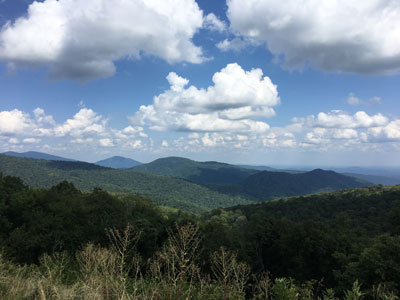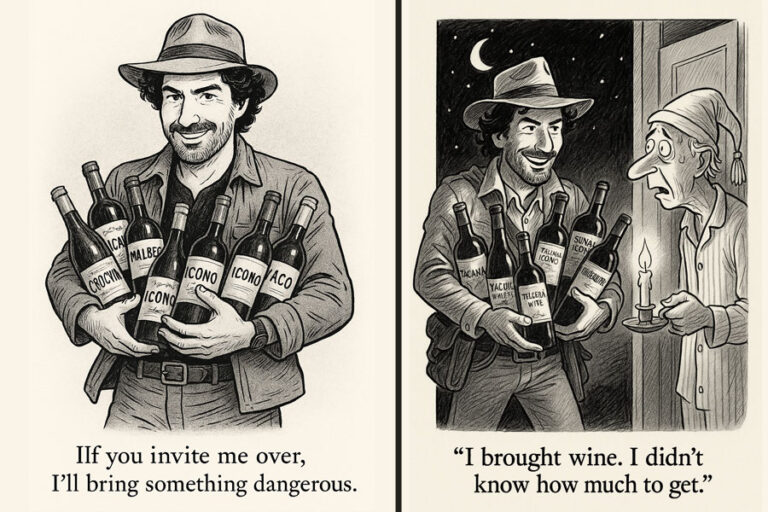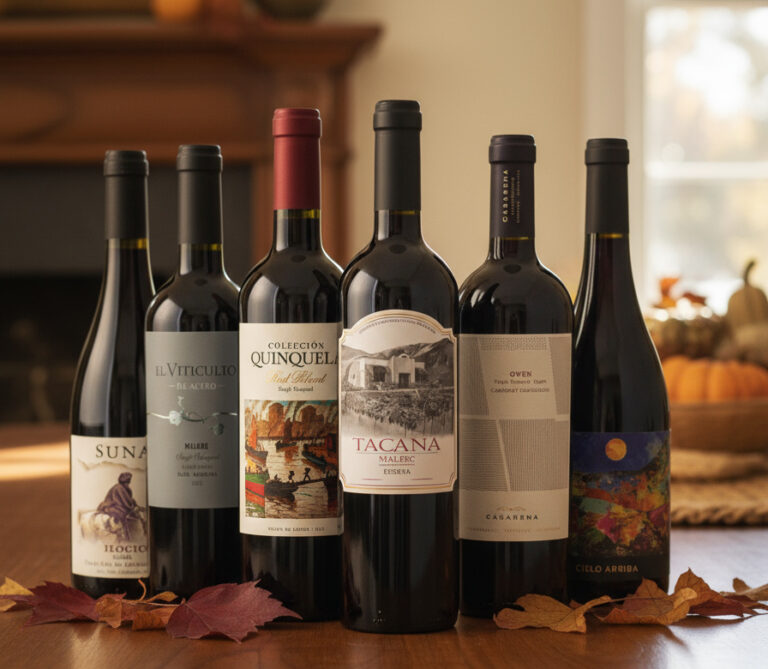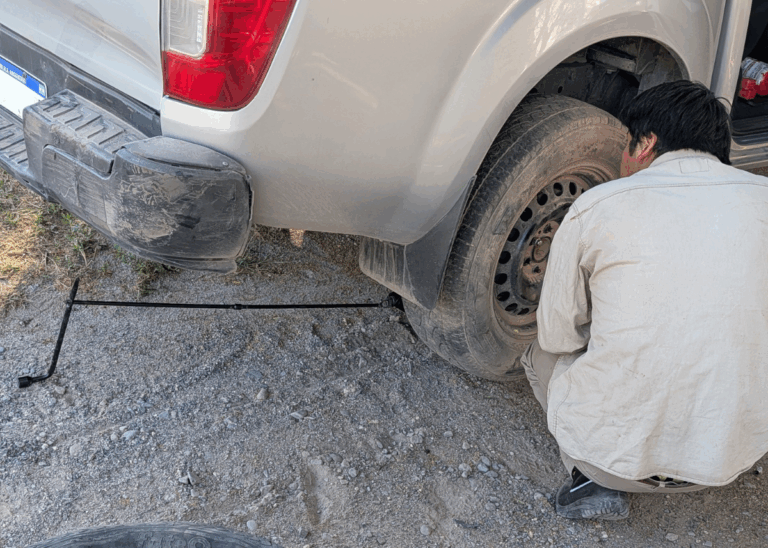[et_pb_section fb_built=”1″ _builder_version=”3.25.1″ global_colors_info=”{}”][et_pb_row _builder_version=”3.25.1″ global_colors_info=”{}”][et_pb_column type=”4_4″ _builder_version=”3.25.1″ global_colors_info=”{}”][et_pb_text _builder_version=”3.27.4″ global_colors_info=”{}”]
Sperryville, Virginia
The air hangs heavy on the front porch of this old Colonial house. White paint flakes off the column to our left. In front of us, off in the distance, the crests and troughs of the Blue Ridge Mountains roll on westward.
For a moment, we fantasize about being in Northern Argentina, where escaping the intense heat of the sun is as easy as stepping into the shade. The thin, dry air there can’t retain heat.
Here in Virginia, the humidity allows no easy refuge, making it the perfect environment for tobacco, corn, crickets, and cicadas. Less so for human beings. Even less so for most wine grapes.
It may come as a surprise, then, that in 1890, Virginia was the fifth-largest wine producer in the world.
More on that below… First, our resident wine expert Julien Miquel is, like any proper Frenchman, on vacation this August. So this week, we’re re-running one of his most popular weekly wine lessons: The Taste of Wine.
In this video, Julien breaks down a wine’s taste into five essential components. You can use these five essential elements to judge and describe any wine you taste.
[/et_pb_text][et_pb_video src=”https://www.youtube.com/watch?v=XARoji0ZJx0&feature=youtu.be” module_id=”video” _builder_version=”3.25.1″ width=”80%” global_colors_info=”{}”][/et_pb_video][et_pb_text _builder_version=”3.27.4″ global_colors_info=”{}”]
How Virginia Won World’s Best Wine (continued)
The first efforts at winemaking in Virginia did not get off to an auspicious start. The early-17th-century settlers of Jamestown imagined the wild and plentiful grapes of the new world might make their colony rich… before realizing that the wine itself was undrinkable.
Over one hundred years later, Thomas Jefferson brought in an Italian viticulturist to oversee a vineyard at Monticello, Virginia… only to find the European vines no match for a dazzling array of local pests and fungi.
Virginia presents some major challenges as a grape-growing region: heavy rainfall and moisture, long maturation periods, early frosts, plentiful pests, and sudden fungal blooms that annihilate vines.
Yet something about the majesty of the land itself, with its rolling hills, green summer lawns, and tangled forests of pine and oak, suggests that great wines should be possible.
 Virginia’s rolling hills and distant mountains
Virginia’s rolling hills and distant mountains
The first breakthrough came in the 1800s, when the Norton grape proved it could withstand the climate, eventually going on to win “best red wine of all nations” at the Vienna World’s Fair of 1873.
Virginia’s wine industry boomed, reaching a peak in 1890, when the Old Dominion became the world’s fifth-biggest producer (the spot now occupied by Argentina).
Sadly, its newfound celebrity proved poorly timed. The Great Depression was just around the corner (preceded by the collapse of the real estate market and a number of smaller panics), as well as Prohibition.
A renaissance would not come until the 1960s, with the founding of the Barboursville winery and the subsequent development of the area around Charlottesville as Virginia’s premier wine region.
Norton remains a popular grape. But the true star of modern Virginia is Cabernet Franc, which digs its roots right down into the clay and limestone soils to produce a spicy wine that speaks, as they say, with a pronounced “Virginia twang.”
You should also look out for Petit Verdot, typically reserved for mixing in other locales, but which in Virginia stands on its own as a single variety wine. If you’re in the mood for a white, try a 2016 Petit Manseng from Horton Vineyards, winner of the 2019 Governor’s Cup wine competition.
(A word of advice: be wary of anything from the 2018 vintage. It was a miserably wet year, leading many winemakers to resort to chaptalization, a process – illegal in some countries – of artificially boosting alcohol content by dumping in sugar during fermentation.)
As for vineyards, there are a number of stand-outs, including Blenheim (owned by musician Dave Matthews), Pippin Hill (for its magnificent views as much as for its wine), Virginia Wineworks, King Family Vineyards, and the aforementioned Barboursville and Horton Vineyards.
We would also be remiss if we did not mention Trump Winery. Many ignore this winery for political reasons, which is a shame, as both the wine and the estate are of superb quality. We recommend especially the sparkling wine. It is best sipped on a cool fall day, watching the leaves detach one by one from the nearby oaks, as the hills in the distance turn from lush green to burning red and dazzling gold.
Until next week…
Bonner Private Wine Partnership
[/et_pb_text][/et_pb_column][/et_pb_row][/et_pb_section]



